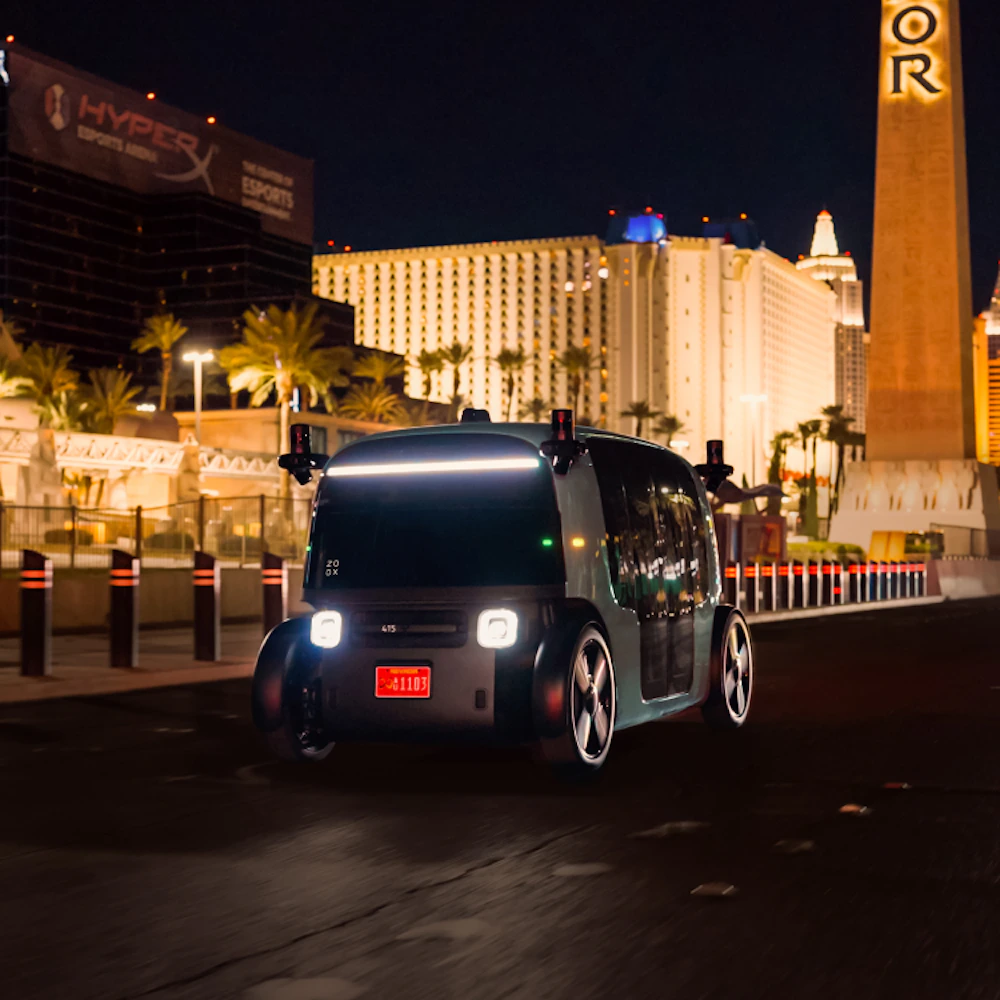Another step towards offering their robotaxi service.
Zoox has asked federal regulators for an exemption that would allow the Amazon-owned autonomous vehicle company to commercially deploy its custom-built robotaxis, which lack traditional controls like pedals and a steering wheel.
The exemption request was first reported by Bloomberg. A Zoox spokesperson confirmed that it has submitted a petition for a “555 exemption” and continues to work closely with the National Highway Traffic Safety Administration through this new exemption process.
An NHTSA spokesperson told TechCrunch that Zoox applied for a temporary exemption from eight Federal Motor Vehicle Safety Standards applicable to its passenger car equipped with an automated driving system. The NHTSA is reviewing Zoox’s application and will publish a notice seeking public comment after the agency conducts its initial review.
The request follows two milestones that put Zoox closer to operating a commercial robotaxi service.
Earlier this month, Zoox launched a free robotaxi service that is open to the public in Las Vegas. And in August, the NHTSA gave Zoox an exemption to demonstrate its custom-built robotaxis on public roads.
While the August exemption cleared up a long-standing debate over whether Zoox’s custom-built autonomous vehicles complied with federal motor vehicle safety standards, it only covered research and demonstrations on public roads. This latest application is separate and would broaden the scope and pave the way for Zoox to launch a commercial robotaxi service.
That Bloomberg story is paywalled, or I’d have used it as the source. Zoox is currently doing a demo in Las Vegas, in a limited area and using fixed routes. The goal of this approval is to let them compete as a proper robotaxi service, where cities like Austin are in the wings. Since it seems that these things are designed to be easy and not too expensive to manufacture, they could ramp up very quickly once they get that approval. Which I expect they will, though how long it will take is not clear to me.
As noted, Zoox is demo-ing in Las Vegas. Here’s one person’s experience with that.
I test rode Zoox on two trips around the Vegas strip on a course prescribed by the company and one trip from the Resorts World casino to the Luxor hotel, a distance of 3.17 miles.
I summoned a Zoox for a ride to Luxor like I would an Uber, Lyft, or Google’s Waymo: I opened the app and entered my origin and destination. The primary difference is that rides are limited to a few select destinations, not an entire service area. Another is that the service is currently free. Zoox has not provided any information on pricing once paid rides begin.
Unlike Waymos, which are retrofitted Jaguar SUVs, Zoox are purpose-built. The car has floor-to-ceiling clear doors on each side. There is no steering wheel and no pedals. The car can hold four people, two on each side facing each other. That is great for conversation, but if more than two of you get motion sickness when traveling backwards, Zoox is not the vehicle for you.
The seats in the Zoox vehicles are public-transit comfortable, which is to say they’re not. Within a minute of sitting down, my back was uncomfortable. Within 10 minutes, my butt was numb.
The interior is spartan. Each side of the Zoox has two Qi charging pads. Of course, there are cupholders. There is also a touch-screen panel that shows the time remaining on the trip. I could adjust the temperature and play music from its selected stations.
On one ride, my Zoox suddenly slowed to a crawl. I couldn’t see an obvious reason and Zoox public relations didn’t respond to a request for an explanation. It eventually unglitched and the rest of the ride was uneventful. On another ride, it correctly waited as an ambulance took a left across our path. The human driver behind us wasn’t patient, honking immediately after the ambulance passed.
One nice touch: Zoox doesn’t have the annoying ticking of the turn-signal indicator while you wait to make a turn. That shows the value of a purpose-built car; you don’t have to carry forward elements that were built for a different era.
Otherwise, the rides were unremarkable — which is the way it should be. After riding Waymos around San Francisco, I have no qualms about riding in autonomous vehicles (AVs). They are safe drivers, sometimes annoyingly so. AVs follow the rules as if a DMV tester were riding shotgun, evaluating every maneuver.
I dunno. I’m not the target audience for this – I’d rather take public transit if available, and if not I’ll just get a human-driven vehicle. I do believe that autonomous vehicles will be safer than human-driven vehicles – Waymo’s track record so far shows that they already are very safe – but there are enough bugs to work out in the overall experience that I’m in no rush. I don’t mind talking to a driver, I don’t mind listening to their choice of music, I’d like to be able to deal with a person if something unexpected comes up. You do you, but I have no desire to be a beta tester or early adopter.

